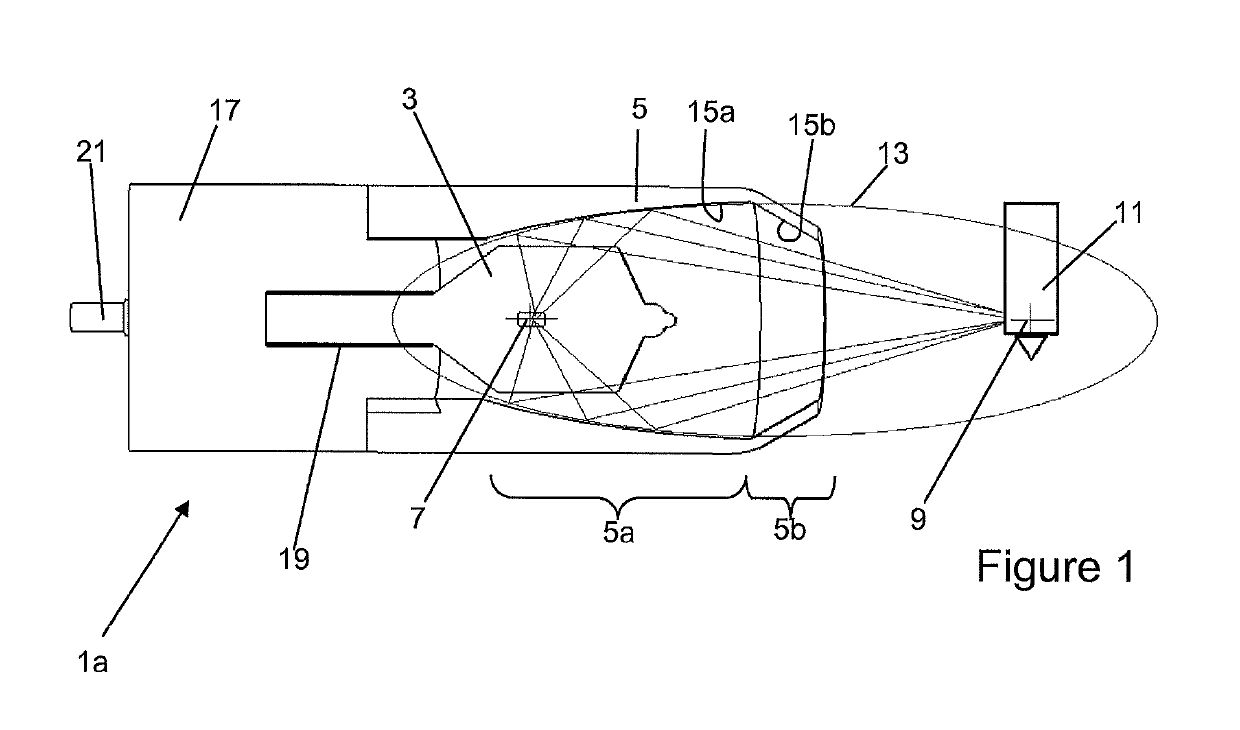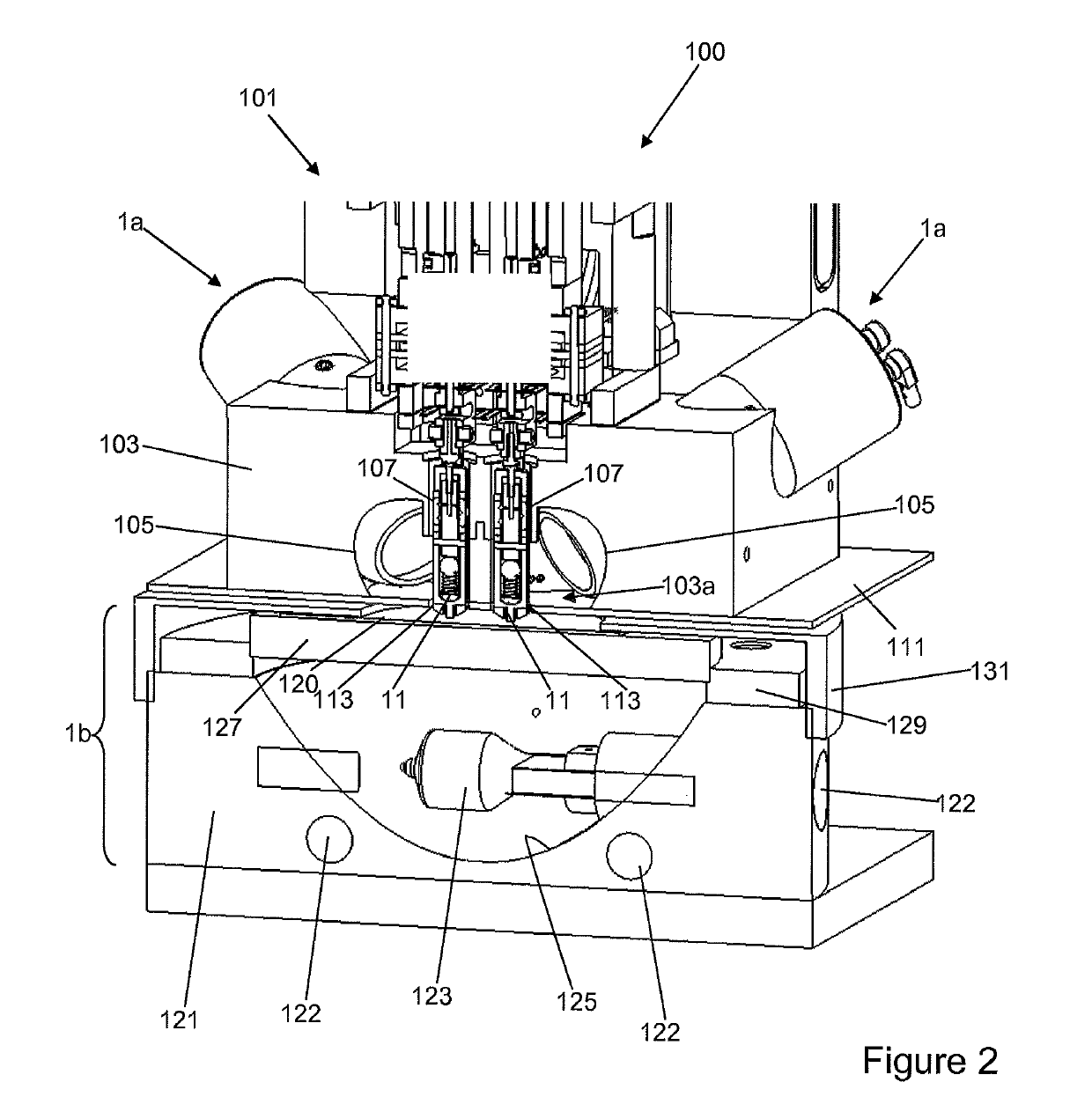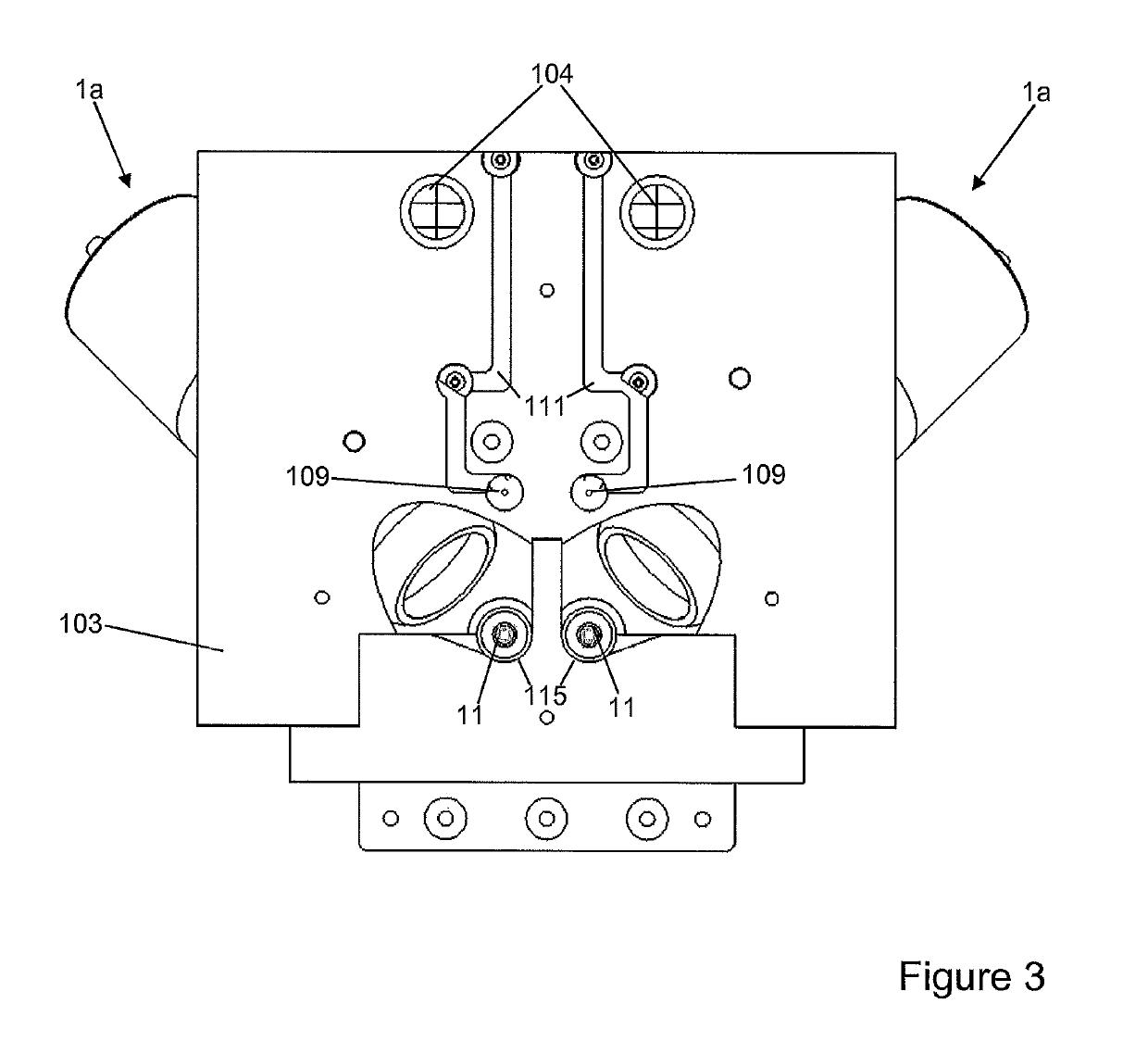Heating arrangement for a material testing device
a testing device and heat arrangement technology, applied in measurement devices, instruments, scientific instruments, etc., can solve problems such as thermal drift, affecting the accuracy of measurements, and introducing heat into measurements, so as to reduce the heat transmission to the headstock and improve the heat flow
- Summary
- Abstract
- Description
- Claims
- Application Information
AI Technical Summary
Benefits of technology
Problems solved by technology
Method used
Image
Examples
Embodiment Construction
[0040]FIG. 1 illustrates schematically the basic principle of a probe heater 1a comprised in a heating arrangement according to the invention.
[0041]The heating arrangement comprises a probe heater 1a comprising an infrared emitting element 3 such as an incandescent lamp (e.g. a halogen lamp), a ceramic heating element, a laser, or similar. Halogen lamps are particularly advantageous because they are cheap, easily replaced, available off-the-shelf, and the filament can easily attain temperatures in the region of 3000 K at relatively low currents. Such an infrared emitting element 3 is illustrated in the present embodiment. Typical power would be around 150 W, however powers as low as 35 W are adequate for certain applications Furthermore, such lamps emit energy in both the visible and infrared wavelength ranges, with a broad spectrum, and have a low thermal inertia due to their low mass, and thus the low heat capacity, of the filament. Their temperature can thus be very easily and ve...
PUM
| Property | Measurement | Unit |
|---|---|---|
| temperature | aaaaa | aaaaa |
| temperatures | aaaaa | aaaaa |
| temperatures | aaaaa | aaaaa |
Abstract
Description
Claims
Application Information
 Login to View More
Login to View More - R&D
- Intellectual Property
- Life Sciences
- Materials
- Tech Scout
- Unparalleled Data Quality
- Higher Quality Content
- 60% Fewer Hallucinations
Browse by: Latest US Patents, China's latest patents, Technical Efficacy Thesaurus, Application Domain, Technology Topic, Popular Technical Reports.
© 2025 PatSnap. All rights reserved.Legal|Privacy policy|Modern Slavery Act Transparency Statement|Sitemap|About US| Contact US: help@patsnap.com



